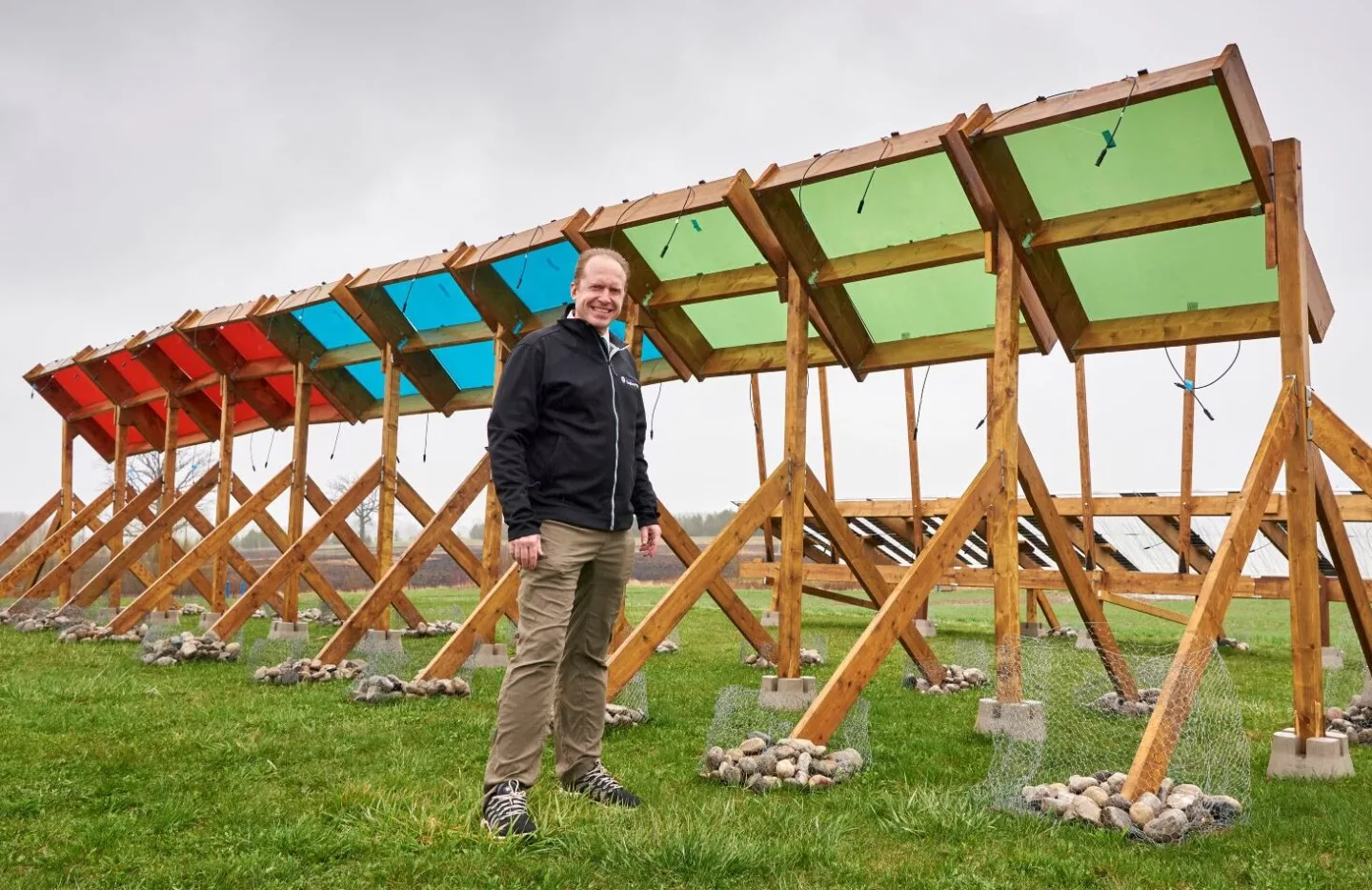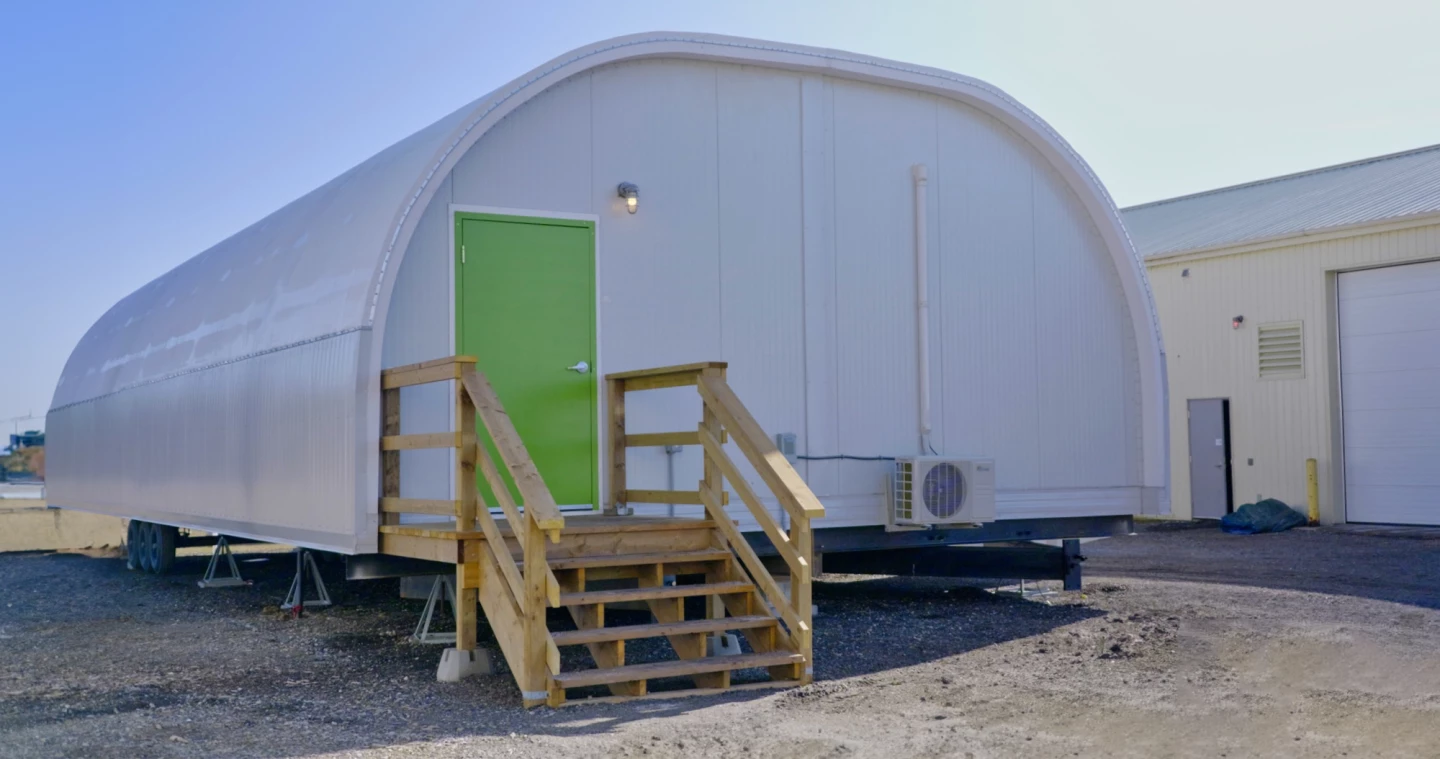Canadian researchers have embarked on a mission to produce year-round berry crops pretty much anywhere. The Agrotunnel vertical farm provides optimum growing conditions monitored by AI, and meets electricity needs with proprietary solar panels.
We've seen a bunch of kitchen growing devices over the years, designed to produce crop after crop of fresh greens throughout the year. Many of these have been crowdfunders, but there have also been startups and household names getting in on the indoor farming idea.
The Agrotunnel project is aiming for food production at larger scales, stacking rows of produce inside a large unit in a similar fashion to vertical farms in Denmark, Dubai and France among others.
This time Western University professor Dr. Joshua Pearce and the Free Appropriate Sustainable Technology (FAST) research group are looking to solve year-round berry production issues caused by climate change and severe weather.

As well as moving the farm indoors for year-round harvests of berries from hybrid vertical aeroponic and hydroponic systems, the team is also tapping into the power of the sun to meet electricity needs.
The Agrotunnel features a fiber-reinforced polymer shell that encloses a fully sealed chamber, and is topped by proprietary semi-transparent photovoltaic panels developed by Dr. Pearce's WIRED (Western Innovation for Renewable Energy Deployment) initiative.
More panels have been installed around the university's Environmental Sciences Field Station where the project is based, which also help shield outdoor plants from extreme weather. All up, the electricity provided by the PV panels is sufficient to power the optimized LED grow lights, water pumps, heat pumps and the AI-powered monitoring hardware so that the experimental farm can operate without drawing energy from the grid.
"Our moveable Agrotunnel, Better Grow Lights and aeroponic/hydroponic growing system, combined with Dr. Pearce’s unique agrivoltaics system, creates an energy efficient, climate-controlled growing space that can handle severe climate and Canadian weather," said Kim Parker, president and CEO of Food Security Structures Canada. "This project addresses food insecurity by empowering individuals and communities to grow their own food locally, year-round, regardless of climate or location." Parker told CBC that the company is looking to deploy Agrotunnels throughout Canada at some point in the future, assuming all the experimental data matches expectations.

Five types of berry are being grown indoors and outdoors – strawberries, blueberries, honeyberries, gooseberries, boysenberries. The outdoor crops will be tested "under different strengths of solar cells to find optimal conditions for outdoor growth as compared to indoors."
The setup is reported to be "modular, scalable and adaptable to various locations and extreme climate conditions," and could potentially provide fresh produce to remote communities throughout the year without the need to transport goods over long distances by road.
The Agrotunnel/Agrivoltaics project is part of the Homegrown Innovation Challenge launched in 2022 by the Weston Family Foundation, where 11 teams were each given CAD 1 million to test concepts for extending the growing seasons of berries in Canada. The initial phase of the challenge is set to run for 18 months, after which the projects will be whittled down to four.
Source: Western University






